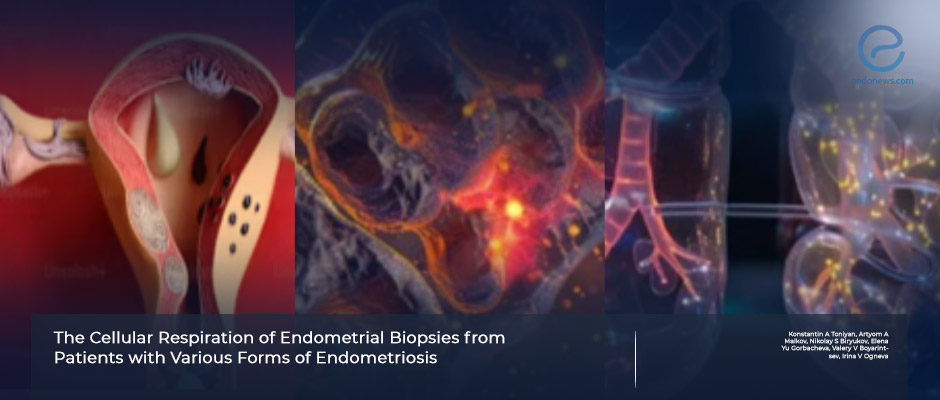Mitochondrial Respiratory Chain in Endometriosis of Various Locations
Oct 9, 2024
Metabolic Alterations in Different Endometriotic Lesions As Non-Hormonal Treatment Targets
Key Points
Highlight
- Different mitocondrial metabolic alterations for genital and extragential endometriosis may pave the way for developing new, non-hormonal treatment options.
Importance
- The well-known oxidative pathway in cellular metabolism is altered in adenomyosis and other endometriosis locations; understanding the key mechanism could provide insights for developing new treatment modalities.
What’s done here?
-
A cohort study was conducted using biomaterial from 91 patients treated at a Moscow hospital. The study included a control group, adenomyosis, pelvic endometriosis, extragenital endometriosis, and postmenopausal patients.
-
Biomaterial was collected during surgeries, samples frozen for RNA analysis or used immediately for polarographic measurements. Oxygen consumption rate was assessed using polarography. The mitochondrial respiratory chain activity were measured.
-
Due to limited sample volumes, mRNA levels of key metabolic enzymes were measured instead of protein content.
Key results
- Endometriosis lesions show distinct metabolic profiles based on their localization, with adenomyosis characterized by increased oxygen consumption and respiratory chain activity, while endometriomas and extragenital lesions display reduced cellular respiration and a shift toward glycolysis, suggesting that therapeutic strategies should be tailored to these metabolic differences.
- It is suggested that for adenomyosis, inhibitors of the terminal stage of cellular respiration, such as macrolide antibiotics like josamycin, could be potential therapeutic agents, whereas for endometriomas and extragenital lesions, glycolysis inhibitors may be more effective.
- In endometriomas, and pelvic endometriotic lesions, cellular respiration decreased, with a shift to glycolysis and succinate utilization, indicating hypoxic conditions.
- In postmenopausal patients, a similar shift occurred, but oxygen absorption rates remained stable.
Strength and Limitations:
- Main limitation is the use of ex vivo data from permeabilized endometrial cells (they reflect mitochondrial oxygen absorption rates, but may not fully capture in vivo conditions due to varying oxygen pressures in tissues with lesions).
- The limited sample size restricted protein identification and technical replicates.
Lay Summary
In a study published in the International Journal of Molecular Sciences, Ogneva et al. investigated the final stage of energy production in cellular metabolism—specifically, the rate of oxygen absorption during oxidative phosphorylation—in endometrial biopsies from patients without endometriosis and those with endometriosis in various localizations.
This study aimed to explore how cells in endometriosis lesions produce energy, comparing different types of endometriosis, including adenomyosis and endometriomas. Researchers analyzed how well these cells absorb oxygen during energy production at oxidative phosphorylation and studied key metabolic proteins involved in this process.
The results showed that in adenomyosis, cells had higher rates of oxygen consumption, suggesting a more active energy production process. On the other hand, in endometriomas and lesions on the peritoneal surface, oxygen consumption was lower, and the cells relied more on glycolysis, a different energy pathway. This shift in energy production, similar to what is seen in cancer cells, could be linked to how endometriosis spreads in the body.
These findings suggest that treatment approaches for endometriosis should consider the type and location of the lesions. For adenomyosis, targeting respiratiory cycle with certain antibiotics, like macrolides, may be effective; while for pelvic endometriosis, endometriomas and extragenital endometriosis, treatments that block glycolysis could be more beneficial.
Understanding these differences in cell cycle may help in developing new, non-hormonal treatment strategies for endometriosis.
Research Source: https://pubmed.ncbi.nlm.nih.gov/38612490/
Endometriosis adenomyosis oxydative glycolysis

